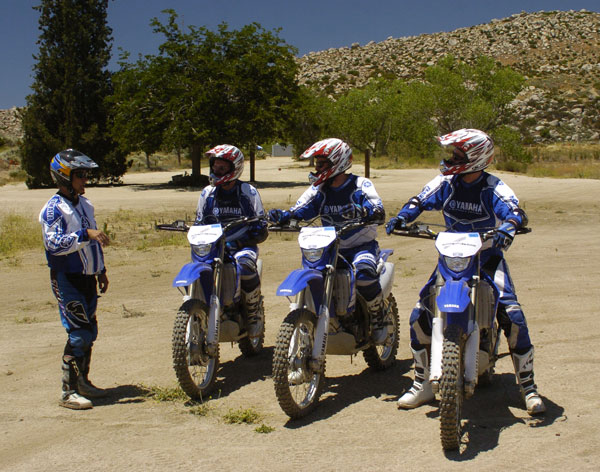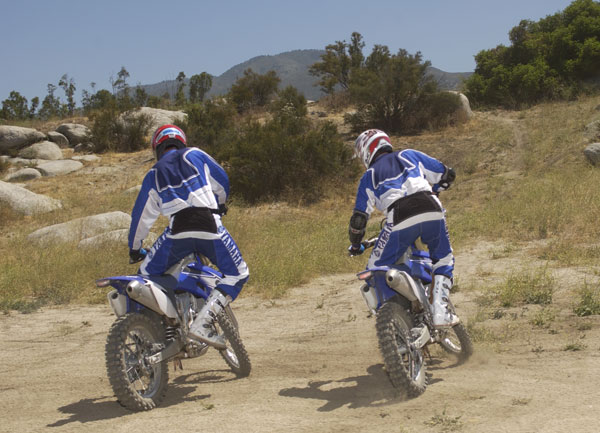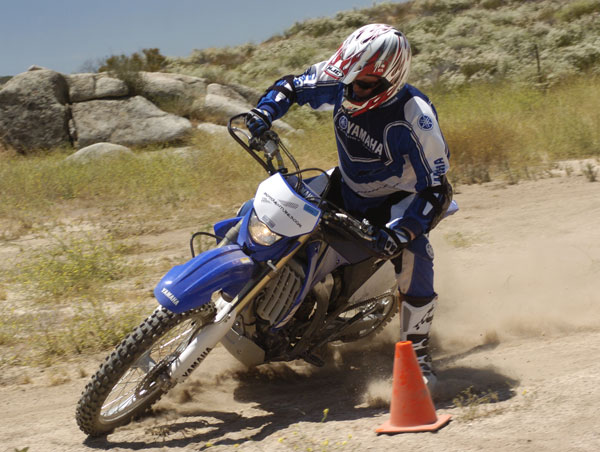No matter how many times street motorcyclists are told that riding off-road will improve their on-road skills, many of them brush it aside. Street riders and dirt riders are often like oil and water. You’re either one or the other, and never the twain shall meet. However, I can attest first-hand, having been a street rider for a decade before I first twisted a throttle off-road, that riding in the dirt opens a whole new world. Two-thirds of the roads in the United States, and 90 percent of the roads on Planet Earth, are unpaved. Forest roads, fire roads and other unpaved roads, not to mention the endless trails open to motorized travel, can take you to remote places where traffic is minimal, views are spectacular and adventure is guaranteed.
When I joined the Rider staff in 2008, one of my earliest assignments was to attend and review a 2-day off-road training camp at MotoVentures, run by Gary LaPlante, author of “How to Ride Off-Road Motorcycles: Key Skills and Advanced Training for All Off-Road, Motocross, and Dual-Sport Riders.” Having spent my teenage years bombing up and down trails on a mountain bike, I quickly took to riding in the dirt. It was fun, challenging and rewarding.

I’ll confess, the first time I rode a motorcycle in the dirt, I was intimidated by the lack of traction. Street riders are trained to avoid patches of dirt, gravel, sand and other hazards that can reduce traction, potentially leading to a crash if encountered while leaned over in a corner. Riding on nothing BUT dirt filled me with anxiety, despite my years of mountain bike riding. But with practice and by learning the correct skills, I learned to stop worrying and love the dirt. Still, after having ridden hundreds of hours and miles off-pavement, since I ride off-road at most once a month, whenever I venture off-road it takes me an hour or so to “get my dirt legs” and find my comfort zone.
Even years later, every time I ride off-road, I can hear Gary LaPlante’s voice in my head—his training left that indelible of an impression. With over four decades of riding, racing, testing and training under his belt, LaPlante knows what he’s talking about, and he’s got a very patient, easy-going manner that puts MotoVentures students at ease. That same confident, encouraging voice comes through in his book.

How to Ride Off-Road Motorcycles covers all the bases, starting off with advice for new riders, first steps and foundation building, and then progresses step-by-step from basic skills (body positioning, braking and turning) to advanced skills (wheelies, jumps, brakeslides and powerslides). Each chapter is full of useful photo sequences to help make sense of each lesson, and each skill includes a list of advanced practice exercises to broaden and deepen understanding. After covering specific skills, several chapters are devoted to terrain and conditions, riding etiquette and responsibilities, bike preparation and more.
An important chapter for street riders is Chapter 19: From Dirt to Street. LaPlante provides a David Letterman-style top-10 list of reasons why dirt riding is great for street riders, which bears repeating here:
1) Dirt bikes are a better tool for the job of learning how to ride.
2) Dirt bikes are better to develop your “feel” for motorcycle controls.
3) Dirt to a better place to learn braking and turning skills and their limits.
4) Dirt is a better place to become accustomed to speed.
5) Dirt bikes are designed for crashing so you can better explore your limits.
6) Dirt riding develops improved visual habits.
7) Dirt is a better place to learn good riding judgment.
8) Dirt riding is a better place to learn how to help your bike.
9) Dirt riding is a better place to learn the importance of staying on line.
10) Dirt is a better overall environment for learning to ride motorcycles.

If you already know how to ride, you may think that many of these aren’t relevant to you. But if we’re honest with ourselves, we all have room for improvement in each area—braking, turning, visualization, line selection and so on—and off-road riding is a great environment for learning. In my mind, the skill improvement and cross-over is just an added bonus, since the primary reason I ride off-road is for fun.
I highly recommend this book. Reading it made me want to go out and do some exercises, to tackle some challenging obstacles, to do some brakeslides and powerslides and wheelies. If you’re already a dirt rider, I’m sure it will fill in some gaps in your understanding of several techniques. If you’re new to the dirt, it will provide inspiration, unlock mysteries and help you become a much better, more confident rider.
FOR MORE INFORMATION:
“How to Ride Off-Road Motorcycles” is available from Amazon (paperback, 176 pages)







